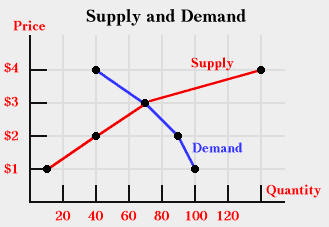For this exercise I've been exploring what could possibly be my own business. In this day in age when healthy lifestyles are "in" and it's becoming more and more popular to life an active life, the business I've chosen to explore is a gym. There are many competitors in this field, such as world health club and 24 hour fitness. Most gyms these days offer all the bells and whistles for more and more hidden fees. As somebody who frequents gyms, I don't want to be paying for all these things I don't need. I miss the small places that are just a gym, just what you need and nothing unnecessary. My gym will offer high quality free weights, machines and cardio equipment. The option for a personal trainer will be available, as well as a part-time physio therapist; these are both essential to gyms and makes for a better experience for the customers, as too is the day care centre. My gym will not have: a sauna, steam showers, juice bar (as I feel this is an unnecessary expense), hot tub or tanning beds. This gym will focus on what is needed for health. This gym will offer the basics so that people can come in and be healthy, have a great workout and head home.
As many gyms it is important to start off on the smaller scale and not try and compete with the big guys right away, but build towards it. Just one building is necessary, should be a good size though. One story large enough for 3 rows of cardio equipment, at least 2 machines per body part (i.e. 2 arm curl machines) and an area for yoga mats and an ab station; bathrooms/change rooms should already be a part of the building. The target market is men and women high school age to seniors, who want a good workout and to pay a fair price for what they get. Mothers and Fathers with kids who maybe can't afford fancy places, but have an option for child care. High school kids or college students, again who don't need all the extras. For a gym, the target market is very large.
 |
| 24 hour fitness, Hollywood |
It can be quite expensive to run a gym (like any business) however by keeping things simple we can eliminate unnecessary costs. Long terms costs include: the machines, business permit and eventually the building hopefully. Short term costs include: child day care activities like toys, movies. T.V.'s for the workout area, water bottles and small amount of merchandise for re-sale such as t-shirts and shorts, and a computer for imputing customer information etc... The fixed costs are where the real expense hits, costs like: Salaries for personal trainers, physio therapist, and basic gym employees (such as the babysitting area employee(s). Rent, utilities, cable and Internet are also a fixed (monthly) cost.
There are many costs to cover, but with a fair and clear-cut pricing strategy, I believe the gym could be successful. I've resorted to a home gym myself, it's not as good for sure, but I prefer it to the big expensive gyms that have things I really don't need.
http://www.worldhealth.ca/
The site I chose to explore is World Health. It's a big one but more similar to my gym as it doesn't offer as many unnecessary things as Golds Gym does. One thing I like about the site is it posts about challenges the gym offers as well as success stories. It mentions group workouts, personal trainers and registered programs (programs that offer personal training, massage and a dietitian) these are all salaries that need to be paid. The site does not offer what the gym itself includes like number of machines or amount of free weights so it's tough to judge those costs. Also the site does not offer photo's of any locations to determine if they have T.V.'s or a child care area. The site also does not include prices- which tells me they have hidden costs somewhere and can't commit to a simple price. I ended up contacting a store to ask for their student price. They charge more at the beginning and ask for a down payment; however the price per month does drop (as to protect integrity of this company I won't tell the prices) but let's say my equipment I own costs me less than 1 year here. Having been in a World Health I can say a strength is their employee's (they're very knowledgeable and helpful) and their free weights are great and there's plenty of them! I don't like that they can't just offer a fixed cost and post it online, that's a weakness (as too are the hidden costs).

References:
http://blogs.laweekly.com/arts/2012/05/best_gyms_equinox_crunch.php 24 hr fitness photo
http://www.worldhealth.ca/locations.aspx World Health Logo
http://forums.musculardevelopment.com/showthread.php/73206-Does-anybody-here-go-to-fancy-gym click this link for an interesting chatroom about "fancy" gyms and perhaps unnecessary equipment.


 Here is a payoff matrix between 2 large, recognized companies, Target and Wal-Mart.
Here is a payoff matrix between 2 large, recognized companies, Target and Wal-Mart. Lucky Lager cans
Lucky Lager cans 

 Starbucks Japan
Starbucks Japan




.jpg)





